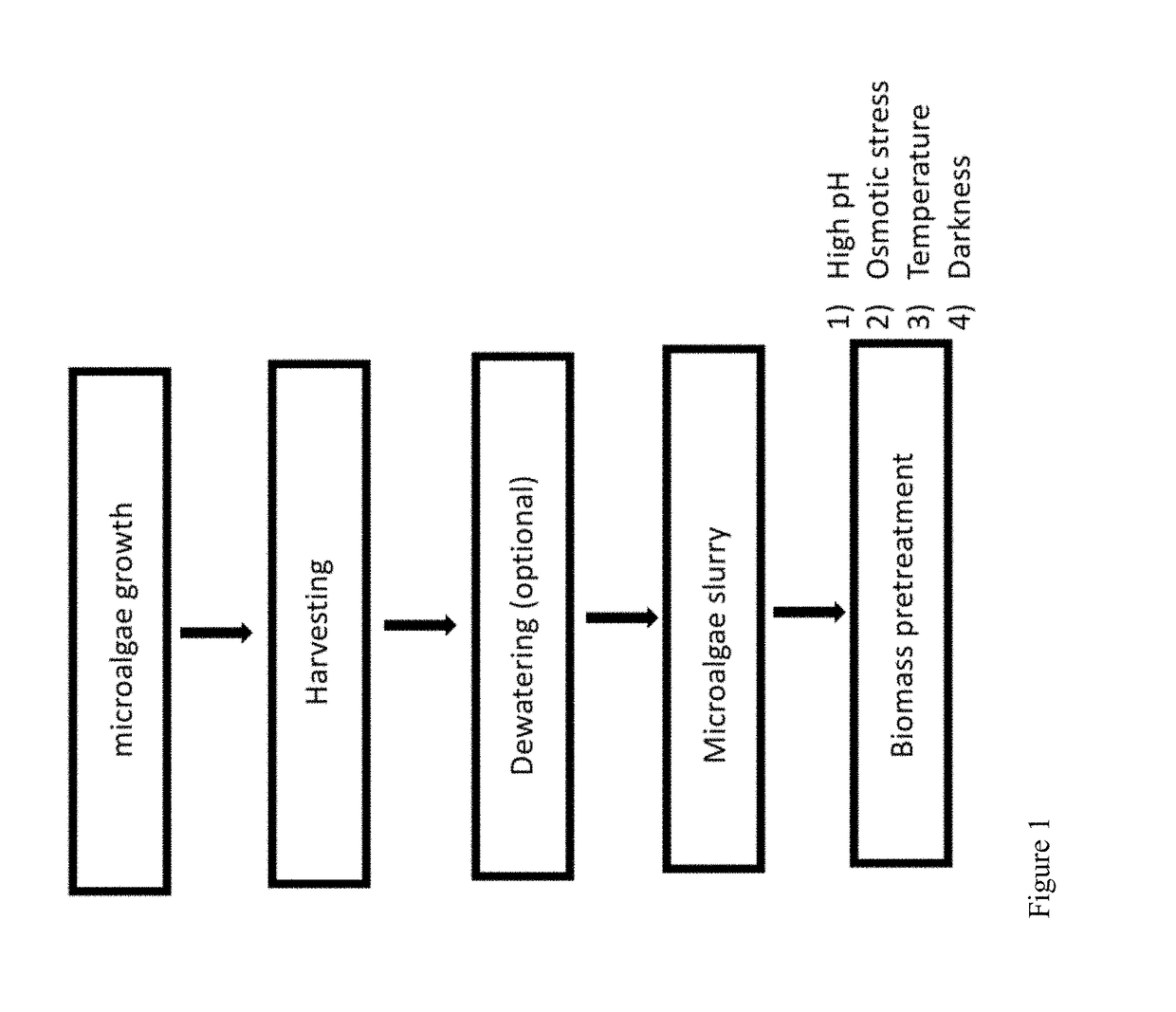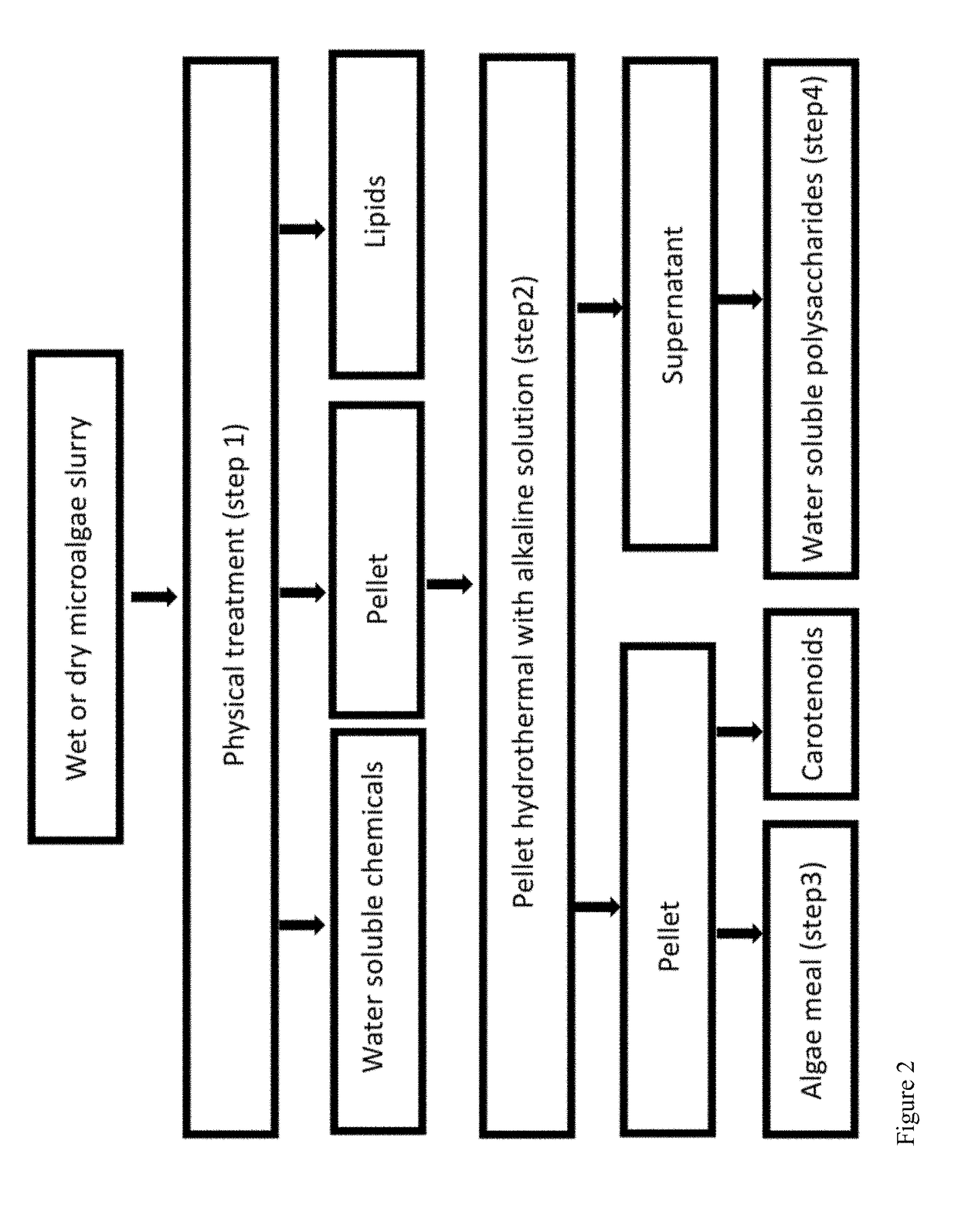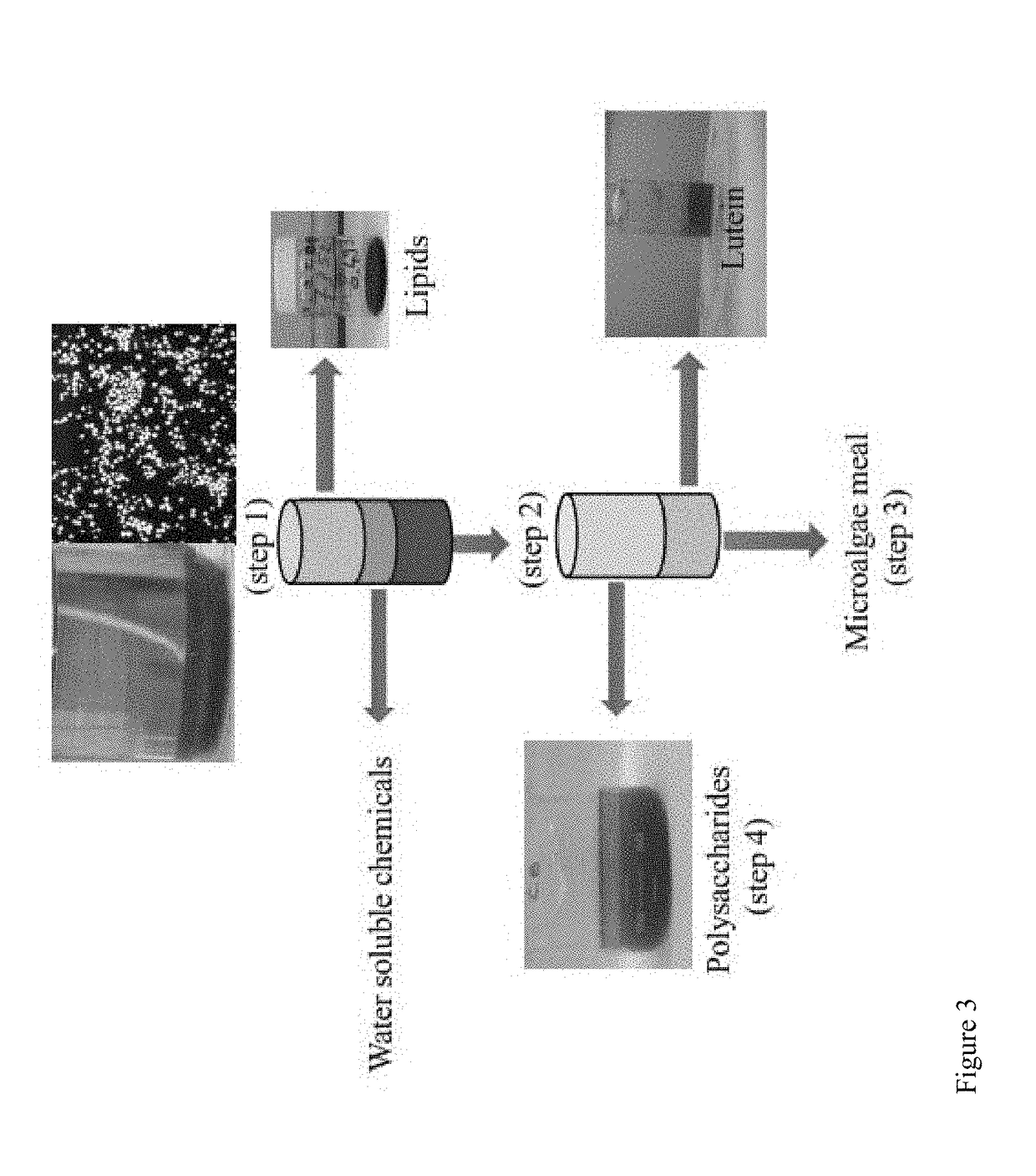Method of microalgal biomass processing for high-value chemicals production, the resulting composition of butyrogenic algal slowly fermenting dietary fiber, and a way to improve colon health using a slowly fermenting butyrogenic algal dietary fiber
a technology of microalgal biomass and dietary fiber, which is applied in the direction of algae medical ingredients, fatty-oil/fat refining, and separation processes, etc., can solve the problems of insufficient and necessary physical properties for many commercial applications, high cost of operation, etc., and achieves the effects of increasing the level of butyrate production, promoting colonic epithelial regeneration and proliferation, and promoting butyrogenic colon bacteria
- Summary
- Abstract
- Description
- Claims
- Application Information
AI Technical Summary
Benefits of technology
Problems solved by technology
Method used
Image
Examples
example 1
[0151]In Vitro Human Fecal Batch Fermentation Analysis
[0152]In vitro fecal batch fermentation was performed according to the method reported by Rose et al. (2010). FOS from Orafti (Tienen, Belgium) was used as a control. A carbonate-phosphate buffer was prepared and immediately saturated by sterile bubbling CO2. A sterile cysteine hydrochloride solution (0.1 g / mL) was added (2.5 mL / L buffer). Fecal samples were obtained from three healthy volunteers who have not taken antibiotics for at least three months and have consumed their routine diets. The feces were pooled and prepared following the method of Rose et al. (2010). Test tubes with no substrate will be used as blanks at each sampling period. After 6, 12, and 24 hours of fermentation, assigned tubes will be removed from the water bath, and total gas volume will be measured using a syringe. SCFA content will be quantified as described by Karppinen (2000).
[0153]The in vitro fermentation test of the microalgal fiber was performed. ...
PUM
| Property | Measurement | Unit |
|---|---|---|
| temperature | aaaaa | aaaaa |
| pressure | aaaaa | aaaaa |
| temperature | aaaaa | aaaaa |
Abstract
Description
Claims
Application Information
 Login to View More
Login to View More - R&D
- Intellectual Property
- Life Sciences
- Materials
- Tech Scout
- Unparalleled Data Quality
- Higher Quality Content
- 60% Fewer Hallucinations
Browse by: Latest US Patents, China's latest patents, Technical Efficacy Thesaurus, Application Domain, Technology Topic, Popular Technical Reports.
© 2025 PatSnap. All rights reserved.Legal|Privacy policy|Modern Slavery Act Transparency Statement|Sitemap|About US| Contact US: help@patsnap.com



